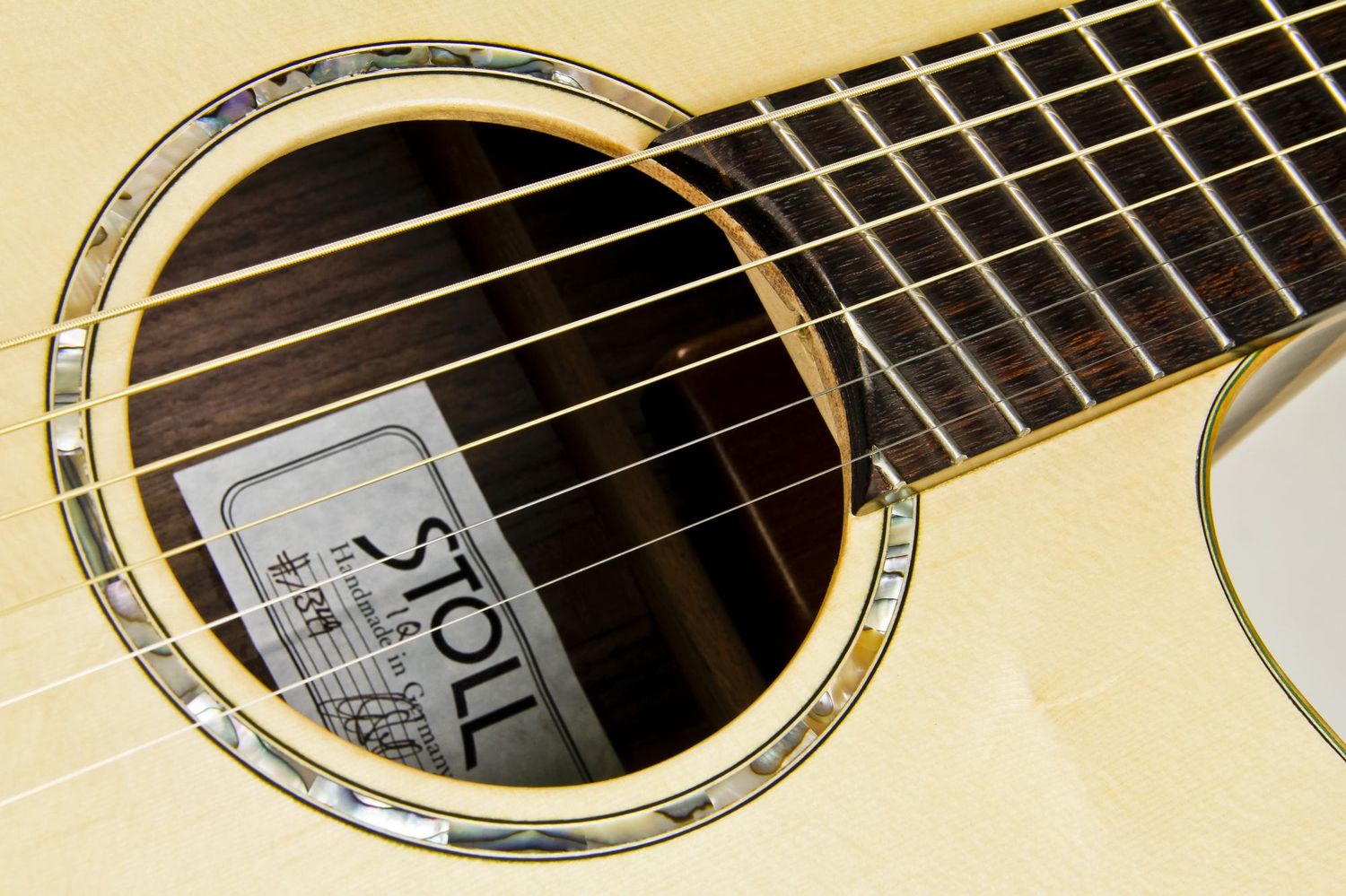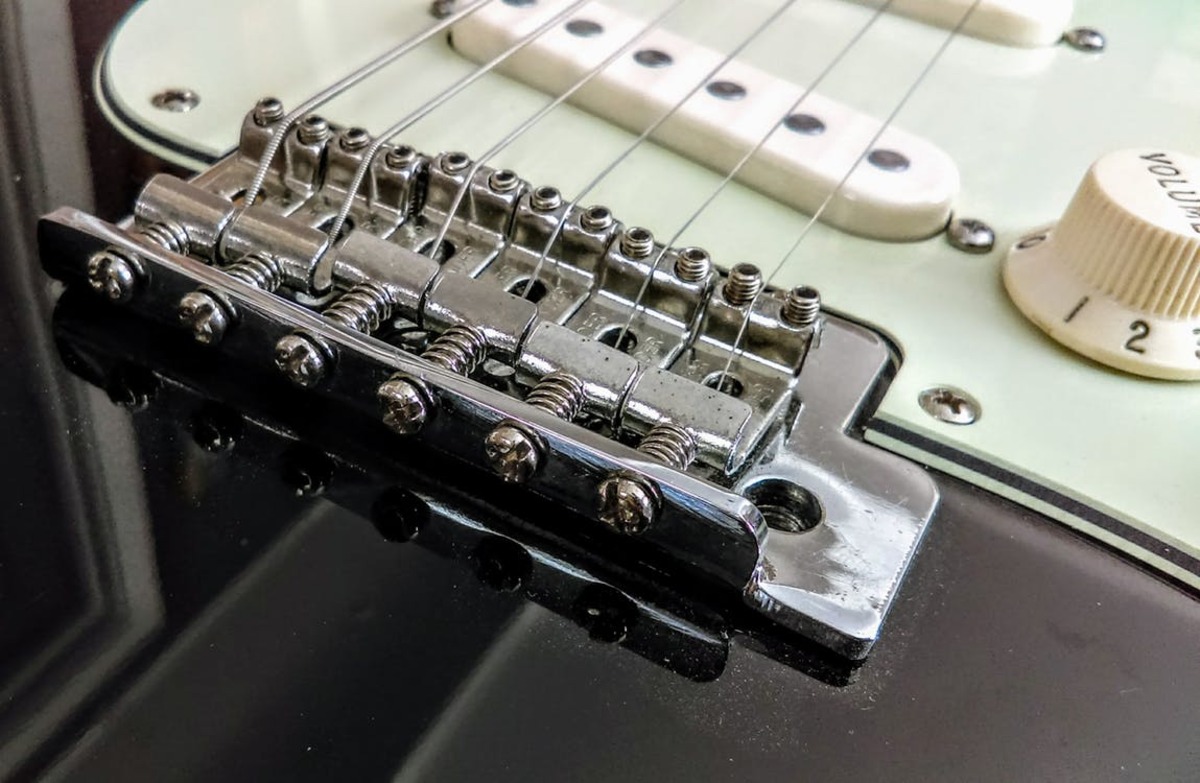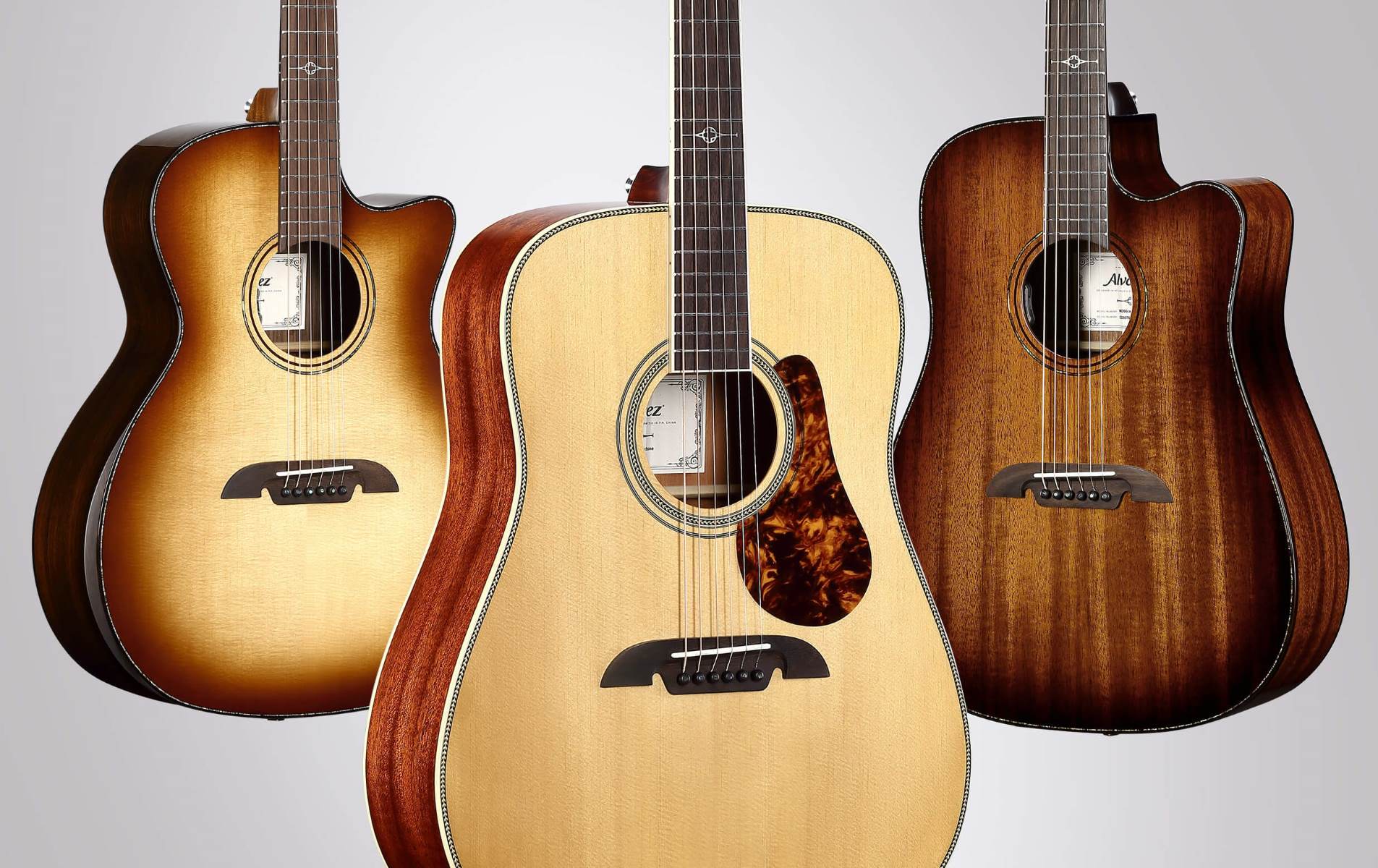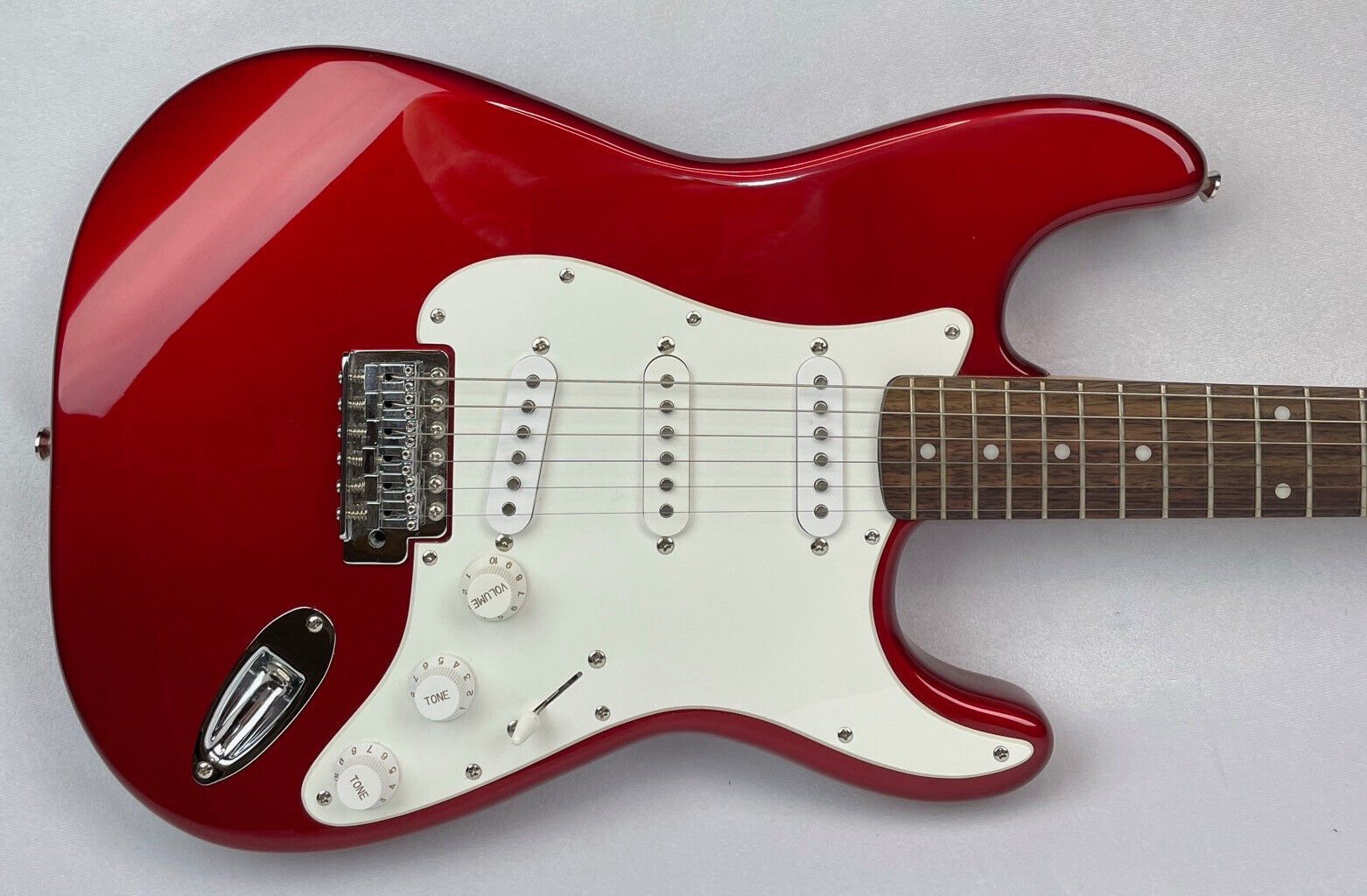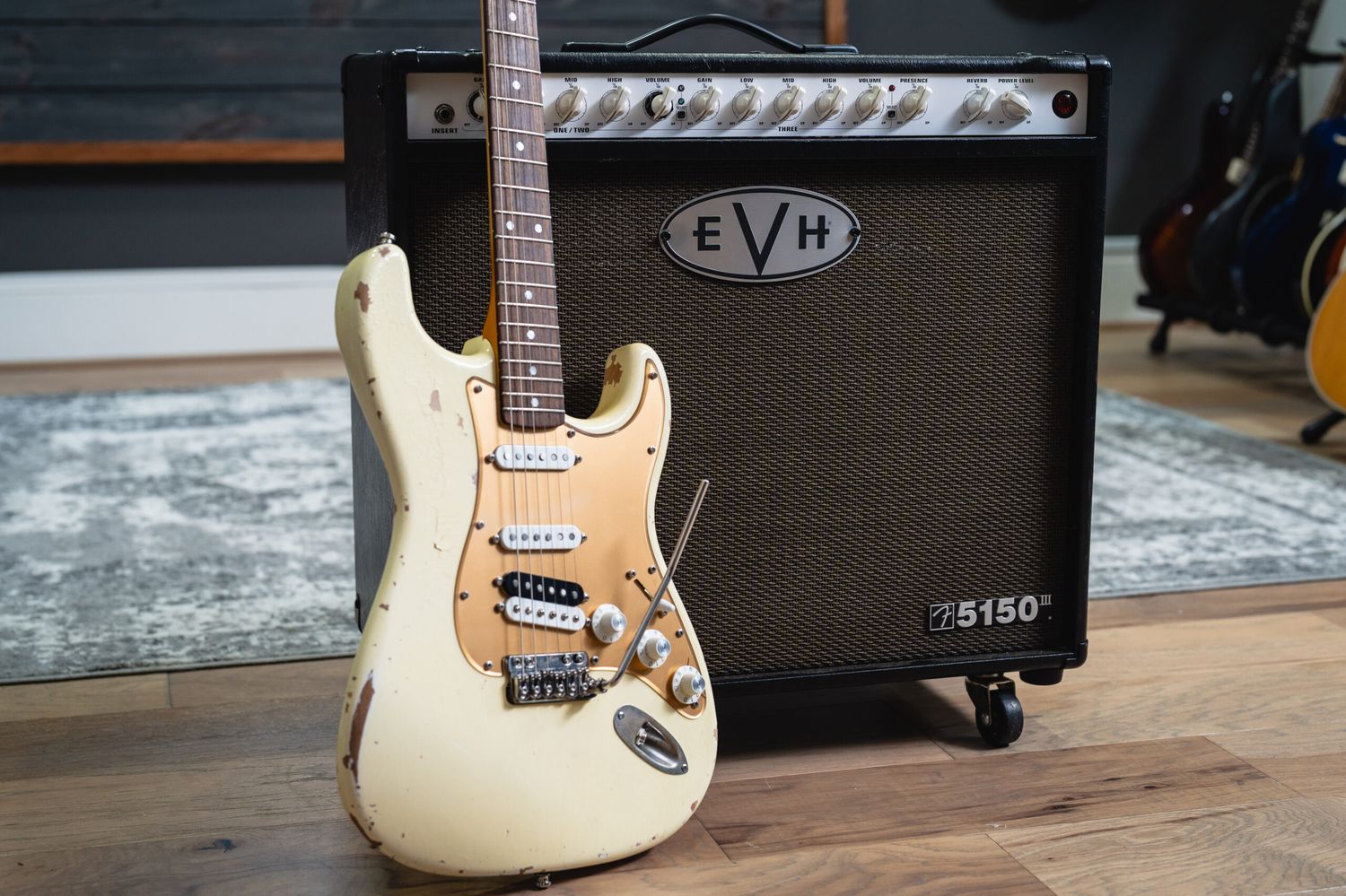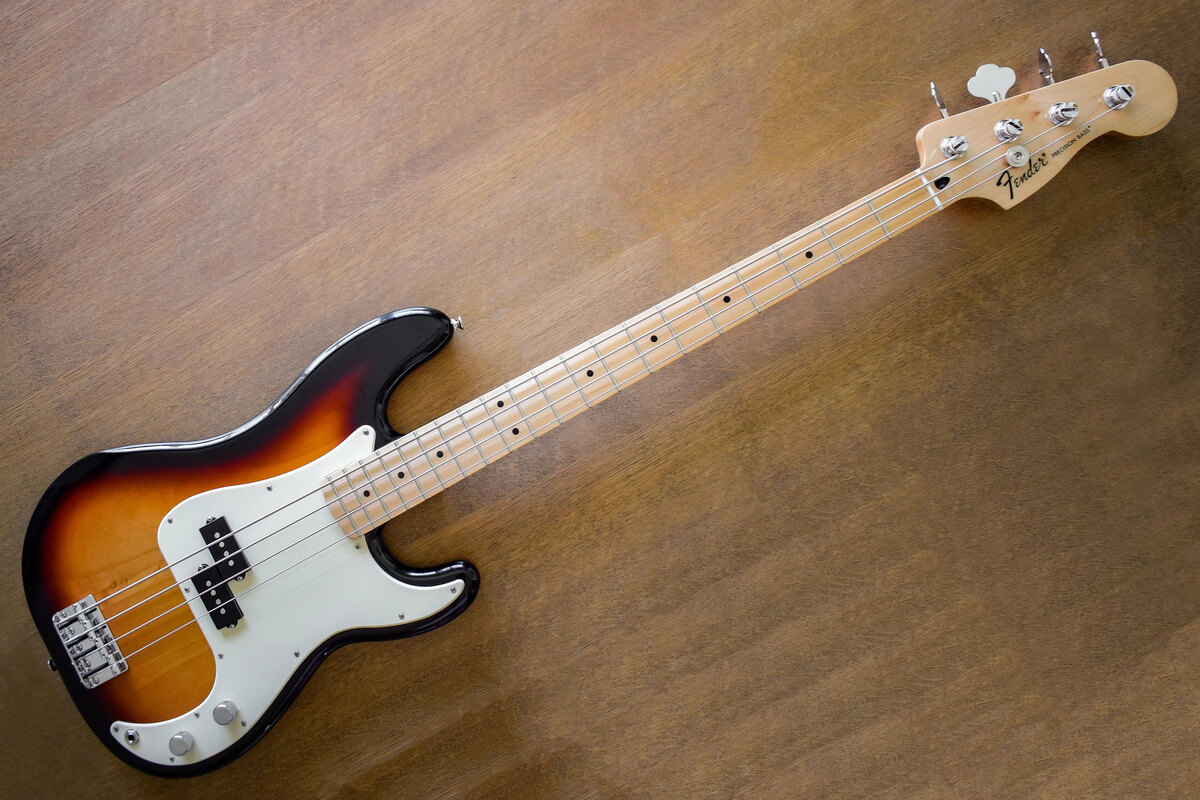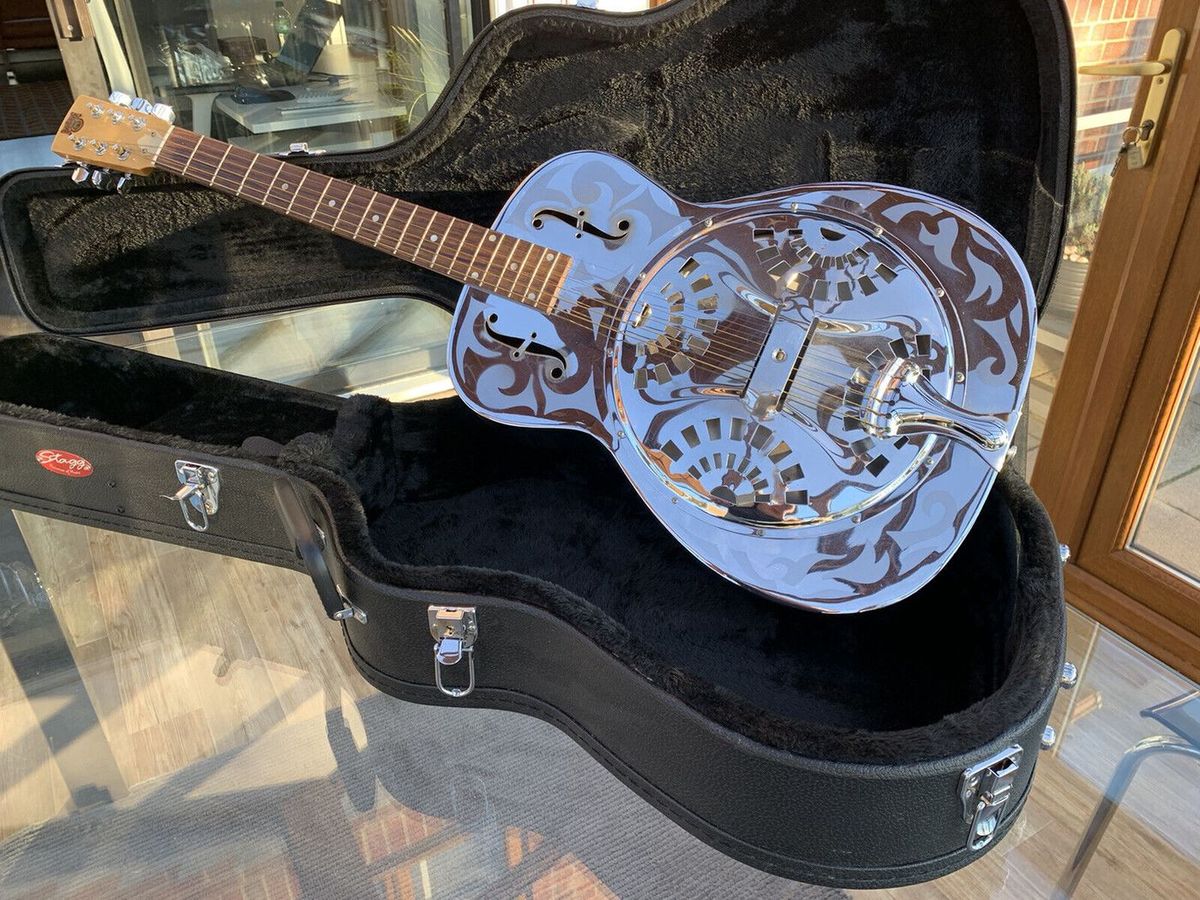Home>Instruments>Guitar>What Is The Headstock Of A Guitar


Guitar
What Is The Headstock Of A Guitar
Published: February 15, 2024
Learn about the headstock of a guitar, its parts, and functions. Explore the significance of the headstock in the overall structure of a guitar.
(Many of the links in this article redirect to a specific reviewed product. Your purchase of these products through affiliate links helps to generate commission for AudioLover.com, at no extra cost. Learn more)
Table of Contents
Introduction
The headstock of a guitar is an essential and visually distinctive component of the instrument. It plays a crucial role in not only supporting the tuning pegs but also contributing to the overall aesthetics of the guitar. Understanding the headstock and its significance is fundamental for both aspiring and seasoned guitarists.
The headstock, also known as the peghead, is located at the top end of the guitar's neck. It serves as the anchor point for the strings and tuning machines, which are vital for adjusting the tension and pitch of the strings. Additionally, the headstock is where the brand or logo of the guitar manufacturer is often displayed, adding a personalized touch to the instrument.
Beyond its functional aspects, the headstock also holds cultural and historical significance within the realm of guitars. The design and shape of the headstock can vary widely among different guitar brands and models, reflecting the unique identity and craftsmanship of each instrument. Furthermore, the headstock contributes to the overall balance and visual appeal of the guitar, making it a focal point for both players and enthusiasts.
In this comprehensive guide, we will delve into the anatomy, functions, and diverse variations of guitar headstocks. By exploring the intricacies of this integral component, readers will gain a deeper appreciation for the headstock's role in shaping the identity and character of different guitars. Whether you're a curious enthusiast or an aspiring guitarist eager to expand your knowledge, this exploration of the headstock will provide valuable insights into the heart of the instrument.
Definition of Headstock
The headstock of a guitar, often referred to as the peghead, is the section located at the end of the guitar’s neck, opposite the body. It serves as a critical structural and functional element, housing the tuning pegs, which are essential for adjusting the tension and pitch of the strings. The headstock also provides a platform for the attachment of the nut, a small piece at the end of the neck that supports the strings, facilitating their alignment and spacing.
From a visual standpoint, the headstock is a prominent feature that significantly contributes to the guitar’s overall aesthetic appeal. It often showcases the brand logo or insignia of the guitar manufacturer, adding a personalized and distinctive touch to the instrument. The design and shape of the headstock can vary widely across different guitar models and brands, reflecting the unique identity and craftsmanship of each instrument.
Furthermore, the headstock plays a vital role in maintaining the stability and tension of the strings, ensuring that they remain in tune during play. The arrangement and alignment of the tuning pegs on the headstock directly impact the ease and precision of tuning, thereby influencing the overall playability and performance of the guitar.
Understanding the anatomy and function of the headstock is essential for guitarists, as it directly impacts the instrument’s tuning stability, visual appeal, and brand identity. By grasping the significance of this integral component, players can develop a deeper appreciation for the craftsmanship and engineering that goes into the creation of different guitar models.
Functions of the Headstock
The headstock of a guitar serves several crucial functions that contribute to the instrument’s playability, tuning stability, and visual identity. Understanding these functions is essential for both novice and experienced guitarists, as it directly impacts the overall performance and appeal of the instrument.
- Tuning Stability: One of the primary functions of the headstock is to provide a secure anchor for the tuning pegs, which enable players to adjust the tension and pitch of the strings. The arrangement and alignment of the tuning pegs on the headstock play a pivotal role in maintaining the stability of the strings, ensuring that the guitar remains in tune during play. This function is critical for achieving consistent and accurate pitch across the fretboard.
- String Alignment and Spacing: The headstock also houses the nut, a small component located at the end of the guitar’s neck. The nut supports the strings, facilitating their alignment and spacing as they transition from the headstock to the fretboard. Proper alignment and spacing are essential for ensuring that the strings vibrate freely and produce clear, resonant tones, contributing to the overall playability and tonal quality of the instrument.
- Brand Representation: Beyond its functional aspects, the headstock often features the brand logo or insignia of the guitar manufacturer. This serves as a visual representation of the instrument’s heritage and craftsmanship, adding a personalized and distinctive touch to the guitar. The headstock thus plays a significant role in communicating the brand identity and legacy associated with the instrument.
- Visual Appeal: The design and shape of the headstock contribute to the overall aesthetic appeal of the guitar. Different guitar models and brands feature distinct headstock designs, ranging from classic to modern styles. The visual impact of the headstock enhances the instrument’s character and allure, making it a focal point for both players and enthusiasts.
By encompassing these functions, the headstock plays a multifaceted role in shaping the performance, identity, and visual appeal of the guitar. Its significance extends beyond mere structural support, embodying the craftsmanship, heritage, and playability of the instrument.
Types of Headstocks
The world of guitars encompasses a diverse array of headstock designs, each with its own unique characteristics and visual appeal. Understanding the different types of headstocks is essential for guitar enthusiasts and players, as it sheds light on the varied traditions, aesthetics, and functionality associated with different guitar models and brands.
Several distinct types of headstocks exist, each contributing to the overall identity and performance of the guitar. Some of the most prevalent types include:
- Classic Straight Headstock: This traditional headstock design features a straight, linear shape, often associated with vintage and iconic guitar models. Its timeless appearance exudes a sense of heritage and authenticity, making it a popular choice for classic and retro-inspired guitars.
- Asymmetrical Headstock: Characterized by an unconventional and distinctive shape, the asymmetrical headstock offers a modern and avant-garde aesthetic. This type of headstock design is often favored by contemporary guitar makers seeking to infuse their instruments with a unique and eye-catching visual identity.
- 3+3 Headstock Configuration: Commonly found on many acoustic and electric guitars, the 3+3 headstock configuration features three tuning pegs on each side of the headstock. This symmetrical layout provides a balanced and traditional appearance, offering a visually harmonious complement to the overall design of the guitar.
- Inline Headstock: Inline headstocks, also known as “6-in-line” configurations, feature all six tuning pegs aligned on one side of the headstock. This design is frequently utilized in electric guitars, offering a sleek and streamlined appearance that appeals to players seeking a modern and minimalist aesthetic.
These diverse types of headstocks not only contribute to the visual diversity of guitars but also play a significant role in shaping the instrument’s tonal characteristics and tuning stability. The design and configuration of the headstock directly influence the string tension, break angle, and overall resonance of the guitar, making it a pivotal element in the instrument’s construction and performance.
By recognizing the distinct features and attributes of various headstock types, guitar enthusiasts can develop a deeper appreciation for the craftsmanship, heritage, and sonic nuances associated with different guitar models and brands.
Headstock Design and Features
The design and features of a guitar’s headstock play a significant role in defining the instrument’s visual identity, tuning stability, and overall character. From classic and vintage-inspired designs to modern and avant-garde configurations, headstocks encompass a diverse range of aesthetic and functional elements that contribute to the allure and performance of the guitar.
Several key design elements and features characterize the headstock of a guitar, each influencing its functionality and visual appeal:
- Shape and Profile: The shape and profile of the headstock vary widely across different guitar models and brands. Classic headstocks often feature a straight or symmetrical design, exuding a timeless and heritage-inspired aesthetic. In contrast, modern headstocks may incorporate asymmetrical or unconventional shapes, reflecting contemporary design sensibilities and artistic innovation.
- Tuning Peg Configuration: The arrangement of tuning pegs on the headstock significantly impacts the instrument’s tuning stability and string tension. Whether featuring a 3+3, 6-in-line, or other configurations, the placement and alignment of the tuning pegs directly influence the ease and precision of tuning, as well as the overall balance and visual symmetry of the headstock.
- Brand Logo and Insignia: Many headstocks prominently display the brand logo or insignia of the guitar manufacturer, serving as a visual representation of the instrument’s heritage and craftsmanship. The logo’s placement and design on the headstock contribute to the instrument’s personalized and distinctive identity, communicating the legacy and quality associated with the brand.
- Headstock Overlay: Some guitars feature a headstock overlay, which is an additional layer of wood or decorative material applied to the headstock’s face. The overlay may enhance the visual appeal of the headstock, providing a canvas for intricate inlays, exotic wood veneers, or ornate designs that further elevate the instrument’s aesthetic allure.
By integrating these design elements and features, the headstock serves as a focal point that encapsulates the craftsmanship, heritage, and artistic expression associated with the guitar. Its visual impact, combined with its functional significance in maintaining tuning stability and string alignment, makes the headstock a defining element of the instrument’s overall appeal and performance.
Understanding the nuances of headstock design and features enables guitar enthusiasts to appreciate the diversity and artistry inherent in different guitar models, fostering a deeper connection to the instrument’s visual and sonic identity.
Conclusion
The headstock of a guitar stands as a testament to the instrument’s rich heritage, diverse craftsmanship, and visual allure. Beyond its functional role in supporting tuning pegs and maintaining string tension, the headstock serves as a canvas for artistic expression and brand representation, encapsulating the unique identity of each guitar model and brand.
By exploring the diverse types, designs, and features of guitar headstocks, enthusiasts and players gain a deeper appreciation for the artistry and engineering that goes into creating these integral components. Whether drawn to the classic elegance of a straight headstock, the avant-garde appeal of an asymmetrical design, or the modern minimalism of an inline configuration, the headstock’s visual impact resonates with players and collectors alike.
Furthermore, the headstock’s influence extends to the instrument’s sonic characteristics, as its design and configuration directly impact tuning stability, string alignment, and overall resonance. This multifaceted role underscores the headstock’s significance in shaping the playability and tonal quality of the guitar, making it an indispensable element in the instrument’s construction and performance.
As guitar enthusiasts continue to explore the intricacies of headstock design and functionality, they deepen their understanding of the instrument’s cultural significance and artistic evolution. Whether admiring the vintage charm of a classic headstock or embracing the innovative spirit of a modern design, the headstock stands as a timeless emblem of the guitar’s enduring legacy and boundless creativity.
In essence, the headstock represents far more than a structural component of the guitar—it embodies the artistry, heritage, and individuality that define the instrument’s enduring appeal. By recognizing the headstock as a symbol of craftsmanship and visual expression, enthusiasts and players alike celebrate the diverse traditions and innovations that continue to shape the world of guitars.

